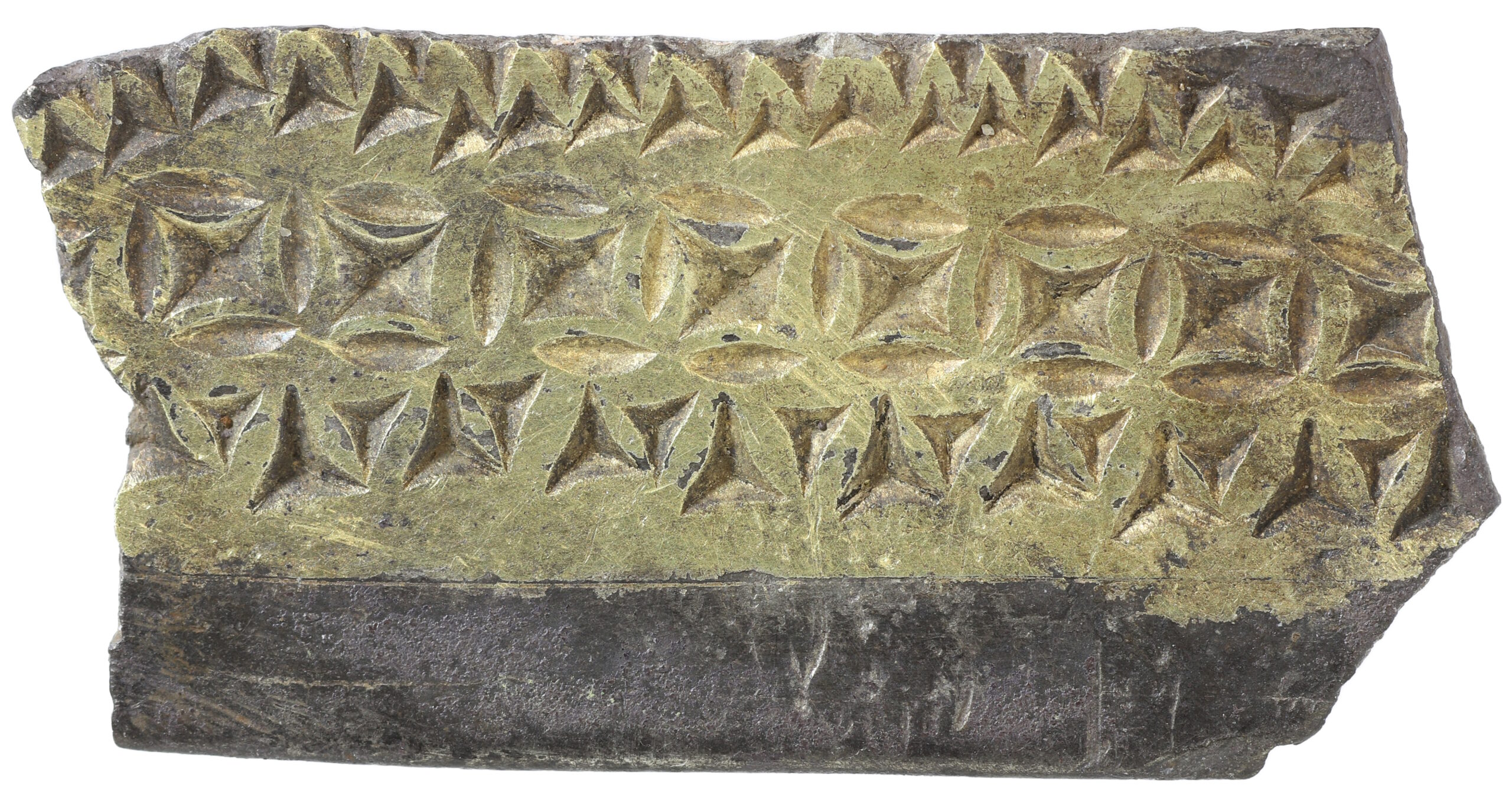A small late Roman (ca. 350-450 A.D.) fragment of gilded silver with stamped decoration has experts stymied. The chip-carved style with rows of geometric shapes stamped or punched on the surface suggests it dates to the late Roman period, but there are no direct parallels on the archaeological record and nobody can figure out what kind of object it originally adorned.
The fragment was discovered last year by a metal detectorist in Norfolk. It is one inch long and half an inch wide and weighs a grand total of two grams. It is flat and a rough rectangle with one broken edge; the rest are cut. The gilding covers all the decorated part of the fragment; a strip along the bottom is ungilded.
There are three rows of decorative shapes parallel to the long edge of the fragment: punched triangles with pointed bases, four-sided pyramids alternating with pointed oval stamps above and below, another row of punched triangles with apexes pointed down alternating with apexes pointing up.
There are a few examples of similar shapes and designs found in hoards of late Antiquity, including a silver-gilt scabbard mount in the Hoxne hoard, but they are not the same and are much more finely executed. The stamping on the fragment is uneven in spacing; the lines are uneven, sometimes curved, too.
The cut edges indicate that the fragment was cut off of its original mount, whatever that may have been, for use as hack-silver. The date indicates this may have been late Roman hack-silver rather than the products of much later Viking raids. Hack-silver was used during the waning days of Roman occupation as payments to soldiers, but it is usually found in a hoard context today. It’s rare to find a single deracinated element like this.
Dr Helen Geake, Norfolk’s county finds liaison officer, said: “The most basic question of all is, ‘what was this?’ … it’s a bit frustrating.” […]
Dr Geake said: “It is at the high end of silver-smithing in the Roman world and part of the sort of thing that would have been produced and used across the whole of Roman Empire, from Egypt to Hadrian’s Wall, from Morocco to Hungary.
“But what is it? If we can’t find a parallel already in a collection, we can’t say what it was or what it was part of.” […]
“I hope someone gets in touch with the answer,” Dr Geake added.
The last time she appealed for help with a mysterious object she was contacted on Twitter by someone who had the solution.

I presume this the same, unfortunately named, Dr. Geake who was a regular cast member from the old BBC series, Time Time. She always appeared to be a pleasant person.
Dean, Thanks for mentioning Time Team. Certainly looks interesting. I’d never heard of the series and it appears they returned after ten years. I know what to watch tonight. Thanks again!
How beautiful it is; a chip from parnassus… Or Olympus!
Maybe a practice piece for a young metalsmith in apprecticeship.